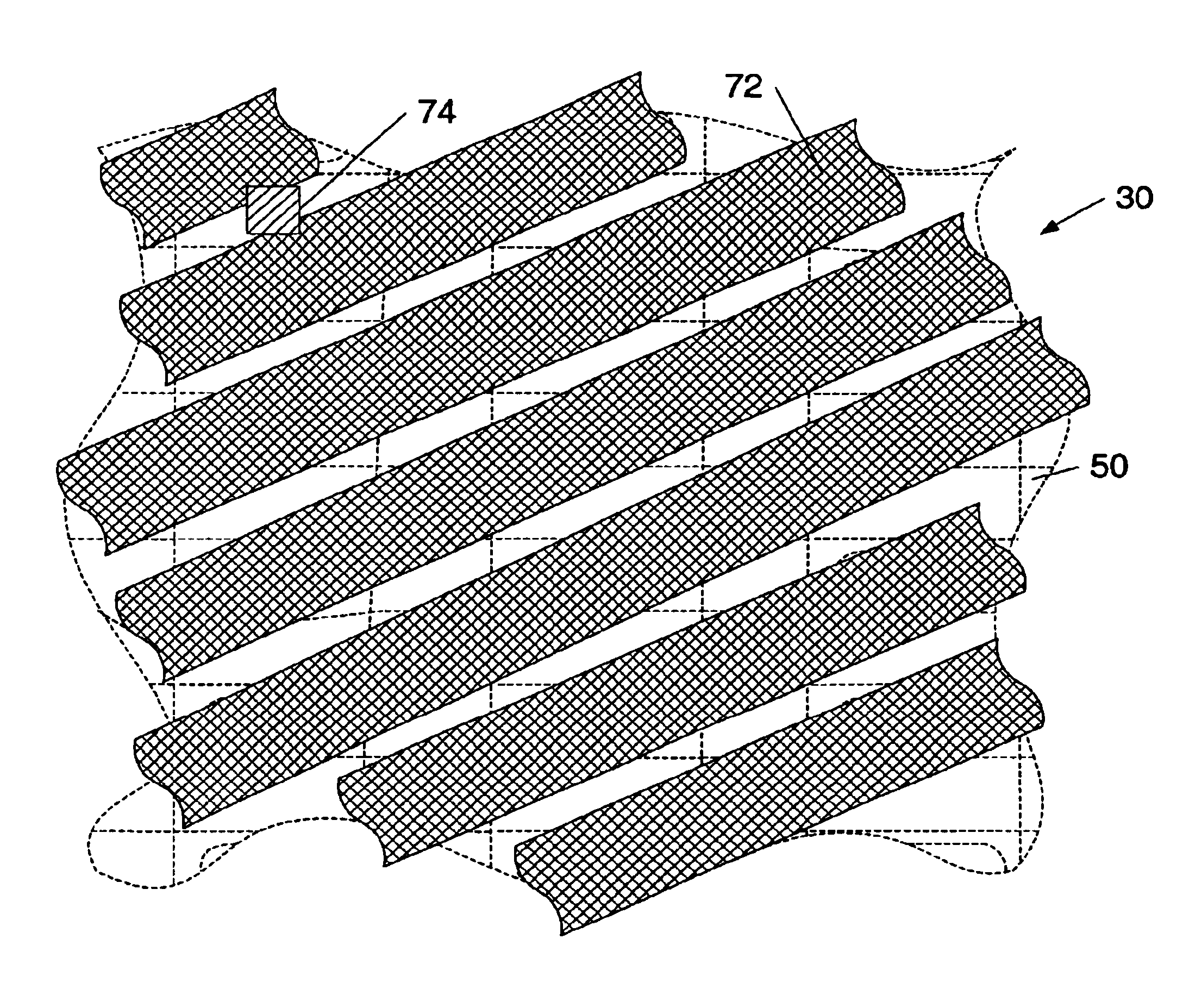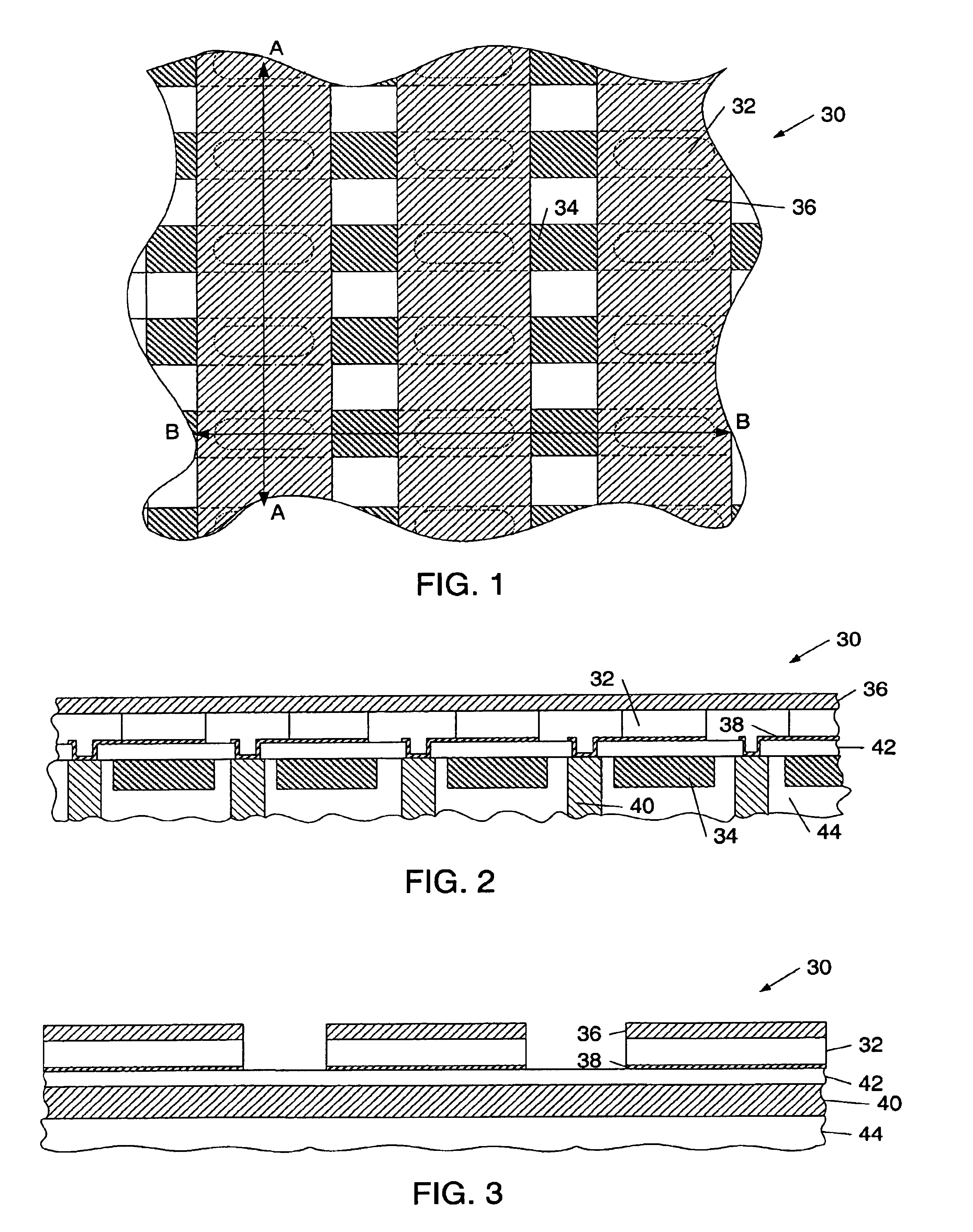Die surface magnetic field shield
a magnetic field shield and surface technology, applied in the direction of semiconductor/solid-state device details, digital storage, instruments, etc., can solve the problems of adversely affecting the functionality of the device, and affecting the operation of the device, so as to reduce the manufacturing cost and improve the production yield , the effect of low magnetic field
- Summary
- Abstract
- Description
- Claims
- Application Information
AI Technical Summary
Benefits of technology
Problems solved by technology
Method used
Image
Examples
Embodiment Construction
[0044]Turning to the drawings, exemplary embodiments of methods for processing a semiconductor topography are shown in FIGS. 1-26. In particular, methods for forming a magnetic field shield (MFS) layer upon a semiconductor topography are provided. FIG. 1 depicts a partial top view of semiconductor topography 30 in which a plurality of memory cells 32 have been arranged between a plurality of digit lines 34 and a plurality of bit lines 36. A partial cross-sectional view of semiconductor topography 30 along line AA is shown in FIG. 2. In contrast, a partial cross-sectional view of semiconductor 30 along line BB is shown in FIG. 3. As shown in FIGS. 1-3, bit lines 36 overly memory cells 32 and respective underlying portions of digit lines 34. As such, memory cells 32 and respective underlying portions of digit lines 34 are represented by dashed lines in FIG. 1, indicating that they are arranged below bit lines 36. In addition, bit lines 36 are arranged perpendicular to the direction to...
PUM
 Login to View More
Login to View More Abstract
Description
Claims
Application Information
 Login to View More
Login to View More - R&D
- Intellectual Property
- Life Sciences
- Materials
- Tech Scout
- Unparalleled Data Quality
- Higher Quality Content
- 60% Fewer Hallucinations
Browse by: Latest US Patents, China's latest patents, Technical Efficacy Thesaurus, Application Domain, Technology Topic, Popular Technical Reports.
© 2025 PatSnap. All rights reserved.Legal|Privacy policy|Modern Slavery Act Transparency Statement|Sitemap|About US| Contact US: help@patsnap.com



